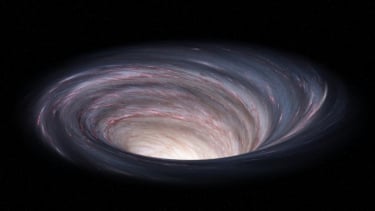James Webb Space Telescope Spots Oldest Black Hole in Universe
- Russia Today
VIVA – The James Webb Space Telescope has spotted the oldest black hole in the universe, and astronomers think even earlier ones could have swarmed the young cosmos.
The telescope has powerful camera technology, allowing it to peer back in time to the early stages of the universe, discovering a supermassive black hole with a mass 10 million times that of the Sun at its center with a baby galaxy 570 million years after the universe began.
The cosmic monster could be just one of the countless black holes that gorged themselves to ever-larger sizes during the cosmic dawn — the period starting about 100 million years after the Big Bang when the young universe glowed for a billion years.
Meanwhile, Astronomers aren't sure why there were so many of these black holes or how they got so big. The researchers who found the latest black hole published their findings on March 15 on the preprint server arXiv, but the research has not been peer-reviewed yet.
Lubang hitam atau black hole.
- Russia Today
"This is the first one that we're finding at this redshift – point in time after the Big Bang, but there should be many of them," said lead study author Rebecca Larson, an astrophysicist at the University of Texas at Austin.
"We do expect that this black hole didn't just form, so there should be more that are younger and existed earlier on in the universe. We're just starting to be able to study this time in cosmic history this way with the JWST, and I'm excited for us to find more of them." Larson added.
Black holes are born from the collapse of giant stars and grow by ceaselessly gorging on gas, dust, stars, and other black holes.
For some of the gluttonous space-time ruptures, the friction causes the material spiraling into their maws to heat up, and they emit light that can be detected by telescopes — turning them into so-called active galactic nuclei (AGN).
The most extreme AGN are quasars, supermassive black holes that are billions of times heavier than the sun and shed their gaseous cocoons with light blasts trillions of times more luminous than the brightest stars.
Because light travels at a fixed speed through the vacuum of space, the deeper that scientists look into the universe, the more remote light they intercept and the further back in time they see. To spot the black hole, the astronomers scanned the sky with two infrared cameras and used the cameras' built-in spectrographs to break down the light into its component frequencies.
By deconstructing these faint glimmers sent from the universe's earliest years, they found an unexpected spike among the frequencies contained within the light is a key sign that the hot material around a black hole was beaming out faint traces of radiation across the universe.
How black holes form so suddenly in young cosmos remains a mystery. Astronomers are still hunting for younger, 'primordial' black holes that appeared after the Big Bang. But so far, black holes remain elusive.





















